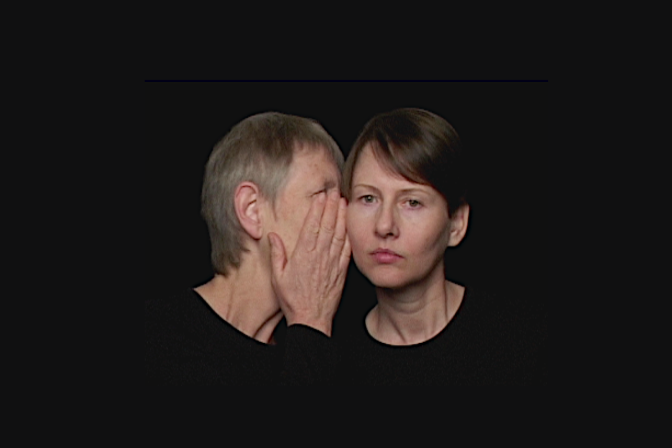Sculpting in Film: The Film Works of Tony Hill is an exhibition of work by experimental artist filmmaker Tony Hill (b. 1946, London) whose work blurs the boundaries between sculpture and cinema, crafting films that are as much three-dimensional spatial experiences as they are moving images. The exhibition presents a richly illustrated survey of Hill’s innovative filmic experiments and sculptures, alongside interviews where Hill demonstrates some of his custom-built camera rigs. It is an invitation to reconsider film as a tactile, spatial, and performative art form—one that expands the possibilities of how cinema can sculpt experience.
Trained initially in architecture before studying sculpture at St. Martin’s College, Hill’s approach to filmmaking emerged from his exposure to the vibrant experimental film scene at the London Filmmakers’ Co-operative (LFMC) during the 1970s, a crucible for British Structural cinema. At LFMC, Hill encountered an environment that challenged conventional cinematic forms and storytelling, prompting him to conceive film projection not merely as image display but as a “sculptural event.” This idea became central to his practice: film was to be experienced as a spatial, performative encounter where projection, physical space, and viewer interaction converge.
One of Hill’s earliest and most innovative works, Floor Film (1975), exemplifies this ethos. In this piece, a screen is laid horizontally on the floor, with images projected via a mirror onto its surface. The images show people filmed from below, creating an uncanny effect where viewers standing on the screen find themselves visually intertwined with these figures. This dislocation between position and perspective unsettles the audience’s habitual ways of seeing and bodily orientation.
Hill’s subsequent films and installations continue to eschew the traditional flat, vertical cinema screen. He invents unusual, often interactive setups where the cinematic apparatus itself becomes a sculptural object—sometimes even mobile or multi-dimensional. His films often challenge gravity and perspective, with some pieces designed to be shown upside down without loss of meaning, thereby disrupting normative spatial perception.
Hill’s oeuvre is notable for its poetic interrogation of perception, time, and space. His films manipulate the landscape and the human form through inventive camera rigs that allow movements and viewpoints otherwise impossible to capture. For instance: Downside Up (1984) features a continuously orbiting camera viewpoint, literally turning the world and the viewer’s gaze inside out. Water Work (1987) explores the liminal zone at and just beneath a swimming pool’s surface, merging the liquid environment with the human body in a fluid, sensuous interplay. Laws of Nature (1997) offers a more intimate, tactile study of the body’s relationship with natural forces.. Camera Obscura (2000) is an idiosyncratic portrait of Darlington Hall Estate in Devon, blending architectural space and personal narrative.
Read >> Website
Watch >> Film
Listen >> Talk
Hill’s films are at once intellectual puzzles and emotional experiences, oscillating between mechanised motion and human vulnerability. A distinctive feature of his work is its persistent focus on the human figure, which grounds his experimental formalism in themes of identity, memory, and embodiment. This tension between the mechanical gaze of the camera and the intimate gaze of the human subject produces a powerful affective charge—his films are often disorienting but also deeply moving.
To achieve his radical visual effects, Hill invents custom-built camera rigs and projection devices that allow him to explore space and movement beyond conventional cinematic constraints. These mechanical innovations are integral to his practice, creating novel modes of cinematic perception.Hill’s experimental apparatus has also opened doors for collaborations. Notably, he worked on the Hotel Bardo project with artist Wistanley Schtinter during the Light Cone Atelier 105 residency in 2018, designing a bespoke camera rig to suit the project’s unique needs. His skills have crossed over into commercial domains, such as the innovative music video for rapper A$AP Rocky’s “A$AP Forever” (2018), where his inventive camera work contributed to the video’s dynamic visual style.
Tony Hill’s work is often discussed in relation to other LFMC contemporaries like Chris Welsby, who also constructs unconventional filming machines to capture the landscape from unexpected viewpoints. Parallels have been drawn between Hill’s Downside Up (1984) and Michael Snow’s seminal La Région Centrale (1971), both of which challenge the traditional cinematic gaze through mechanised camera movement. However, what sets Hill apart is his emphasis on the human body and portraiture, weaving an emotional thread through his structural experiments. His films invite viewers not only to reconsider space and time but also to encounter the complexities of human presence and memory.
Sculpting in Film: The Works of Tony Hill was curated by Keith Whittle and Margherita Gramegna.










